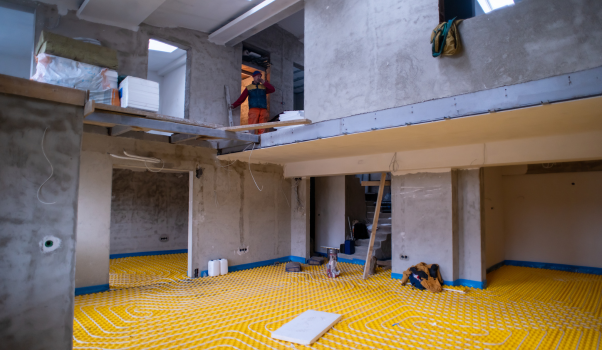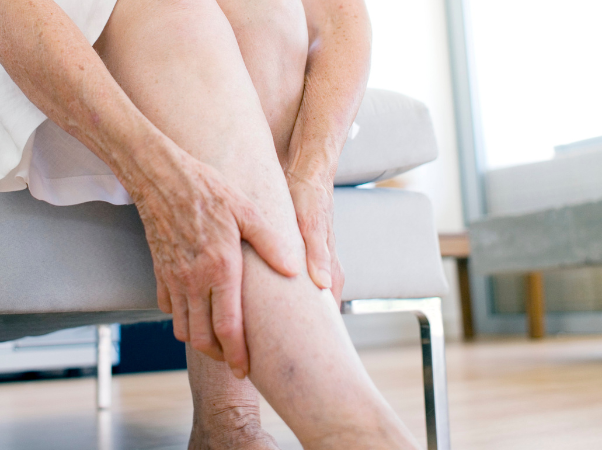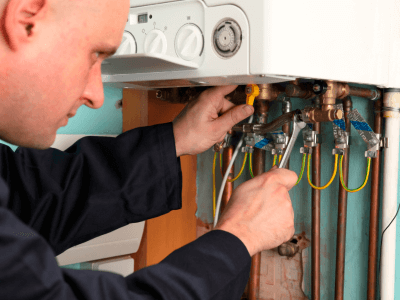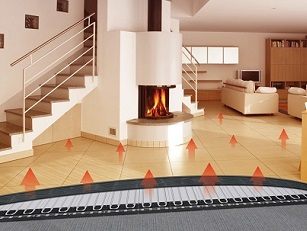Many homeowners opt for underfloor heating as it provides a cosy and energy-efficient way of warming our homes, and can be an effective alternative to traditional home-heating methods.
Yet, several false beliefs about underfloor heating systems often discourage installers, customers, and developers alike from choosing them.
City Plumbing’s home heating experts are here to answer and dispel some of the most common widespread misconceptions about underfloor heating. Explaining why these myths are inaccurate, we show you how underfloor heating can be an excellent option for most homes.

Myth 1: Underfloor Heating Is Only for New Homes
It's a common misconception that underfloor heating can only be installed in new homes.
Underfloor heating can be fitted in both new and existing homes.
An electric underfloor heating system (often called a ‘dry system’) is often used in new-build properties, which only raises the floor level slightly.
An in-floor system is optimal if your property has a concrete floor because it will require excavating the floor and pipes to be laid in the trenches. The pipelines will then be covered with a layer of screed or insulation.
Myth 2: Underfloor Heating Is More Expensive Than Traditional Radiators
While it’s true that the upfront cost of installing underfloor heating is higher than radiators, the long-term prices are often considerably lower.
Underfloor heating systems can provide much more energy efficiency than traditional radiators. UFH systems use less energy, which means potential savings of around 25% additional energy compared to a conventional radiator.
Underfloor Heating systems require less maintenance, saving you time and money on your energy bills in the years to come.
There are a few additional considerations when comparing the cost of underfloor heating and radiators, such as:
- The type of fuel you use - If you use a renewable fuel source, such as solar energy or a heat pump, the underfloor heating costs will be consistently lower.
- The size of your home - The more extensive your home, the more you’ll save on your energy bills by installing underfloor heating.
- The climate in your area - If you live in a cold environment, you’ll save more money on your energy bills by installing underfloor heating.

Myth 3: Underfloor Heating Takes a Long Time to Heat Up
The duration for an underfloor heating system to reach the desired temperature depends on several factors, including the quality of your property’s insulation.
A well-insulated underfloor heating system can be up to 50% more efficient than an uninsulated system. Yet, the type of flooring you currently have will also factor here.
If you have hard floors like tile or concrete, they’ll heat up faster than soft floors such as carpets or rugs. Typically, the system takes approximately 30 minutes to four hours to warm up.
Another type of underfloor heating system is water-based. This operates by circulating warm water through a network of pipes fitted beneath the floor. Water-based underfloor heating systems usually take longer to warm up though, around two to three hours more.
Myth 4: Underfloor Heating Can Damage Floors
Underfloor heating systems will only cause damage to flooring if they aren’t installed correctly or if the wrong type of flooring has been used.
For example, if you install a water underfloor heating system, it's best to avoid natural stone and ceramic tiles because natural stone can crack if overheated.
In contrast, ceramic tiles can become brittle and break. However, ceramic tiles and natural stone flooring are suitable for electric underfloor heating systems.
An underfloor heating system can also damage the flooring by causing it to buckle if the heating cables or pipes are not adequately insulated.
If the temperature of your underfloor heating system gets too high, it can start to dry out the floor and cause it to shrink or crack. So, it's essential to evaluate the thickness of the flooring, as thicker flooring is more heat-resistant than thinner flooring.

Myth 5: Underfloor Heating Makes Your Legs Feel Heavy
Another common belief is that underfloor heating can cause a heavy feeling in your legs due to the heat!
This is only true if the underfloor heating system is set to an excessively high temperature, causing the veins in your legs to dilate, leading to a feeling of heaviness.
Yet, most modern underfloor heating systems are designed to radiate a gentle, even heat that isn’t too hot. But there are some additional tips to alleviate the sensation of heaviness when using your underfloor heating.
- Set your underfloor heating system to a comfortable level, as the ideal temperature for ultimate comfort is between 18 and 24 degrees Celsius.
- Don't sit or stand for long periods, and stretch your legs regularly. (Although this advice applies to everyone - underfloor heating system or not!)
- Avoid wearing restrictive clothing that can slow the blood flow in your legs.
In conclusion, while there are many myths surrounding underfloor heating, it's vital to remember that underfloor heating systems are a creative, highly-viable, and increasingly popular alternative to traditional heating methods that can provide a better quality of life, making your home more enjoyable.
City Plumbing is committed to providing you with the best technical information for your next underfloor heating project. Contact one of our experts, or visit in-branch by using our branch locator. We’re always on hand to help.
Author: Alexis Webster
Other articles

The Benefits of an Annual Boiler Service
08 Nov 2023 ・ 5 mins

Stay Warm This Winter With a Budget Boiler
30 Oct 2023 ・ 5 mins

5 Essential Tips to Improve Your Energy Efficiency
20 Oct 2023 ・ 4 mins

The difference between electric & water underfloor heating
22 Mar 2022 ・ 6 mins



